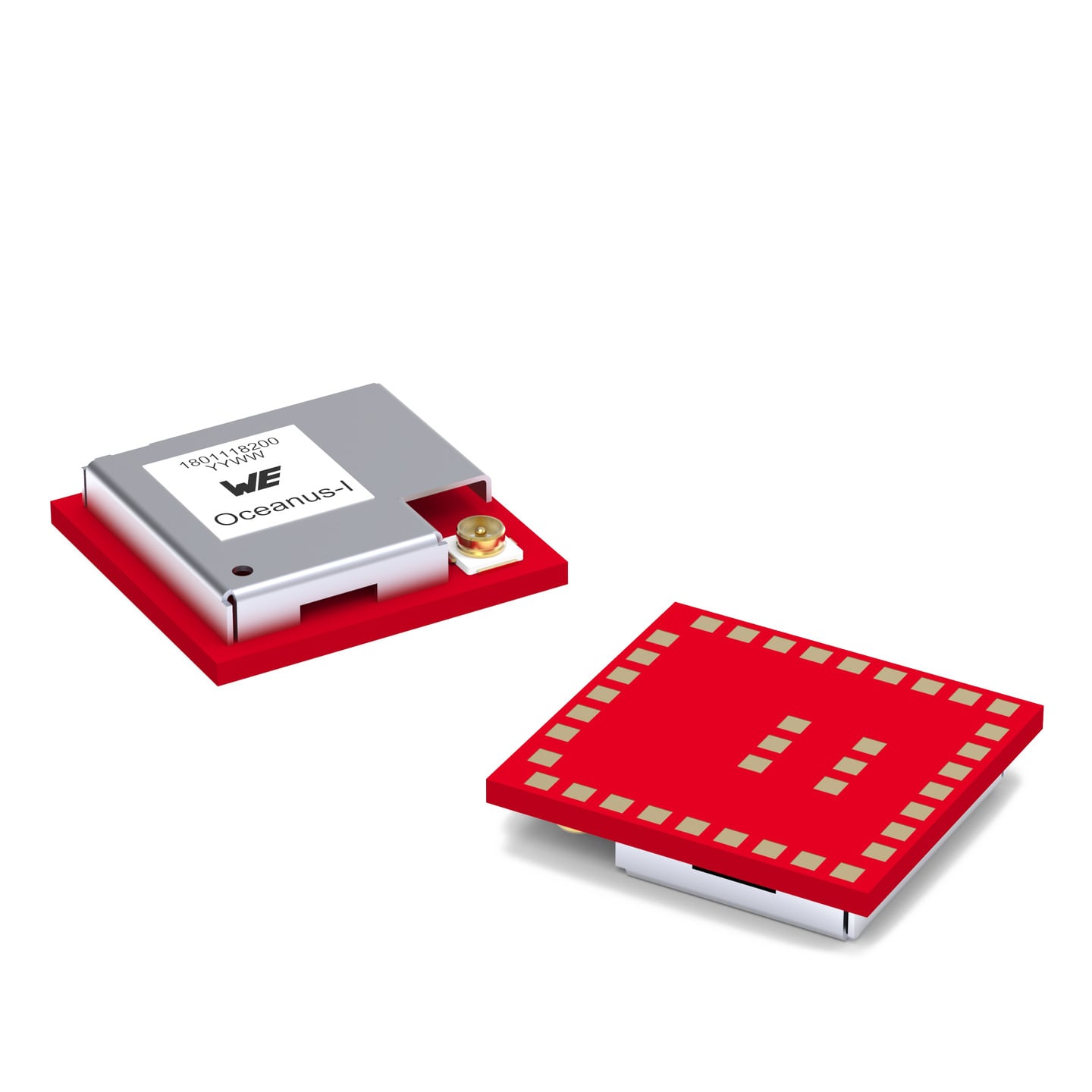Characteristics
- No firmware preflashed. LoRaWAN® and LoRa® P2P protocols are supported.
- Radio module based on STM32WLE5CCU6 chip
- Supports EU868 frequency band
- Small design size: 15 x 16 x 3 mm
- Ultra-low power consumption of 63.9 nA in sleep mode
- 13.4 dBm output power
- Antenna connection either via UMRF connector or RF pin (2-in-1 module)
- The Daphnis-I module with installed firmware for LoRaWAN® is available on the same hardware platform.
Applications
Smart City / Smart Home
- Smart Parking | Waste and Water Management | Smart Metering | Traffic and Parking Lighting | Room Occupancy | Temperature and Humidity Monitoring | Condition Monitoring
Agriculture and Healthcare
- Crop & Livestock Monitoring | Irrigation Management | Health Monitoring | Equipment, Infrastructure Monitoring
Automotive & Transport
- Logistics and Transportation Management | Space Utilization | Fleet Monitoring
Smart Factory / Industrial 4.0
- Predictive Maintenance | Supply Chain Management | Environment Monitoring
Products
| Order Code | Datasheet | Manual | Downloads | Status | Description | Frequency Range (MHz) | dLoS (m) | VDD min. (V) | VDD max. (V) | Rb max. (kbps) | ANTConn | Offer |
|---|---|---|---|---|---|---|---|---|---|---|---|---|
| 2618019382001 | – | – | New i| Product is new in our portfolio and production is active. Expected lifetime: >10 years. | EV-Kit Oceanus-I | – | – | – | – | – | – | ||
| 2618011182000 | SPEC | 2 files | New i| Product is new in our portfolio and production is active. Expected lifetime: >10 years. | Oceanus-I | 863 - 870 | 25000 | 2 | 3.6 | 300 | RF pad, UMRF |
| Order Code | Datasheet |
|---|---|
| 2618019382001 | – |
| 2618011182000 | SPEC |
| Offer |
|---|
| Order Code | Datasheet | Manual | Downloads | Status | Description | Frequency Range (MHz) | dLoS (m) | VDD min. (V) | VDD max. (V) | Rb max. (kbps) | ANTConn | Offer |
|---|

LoRa® & LoRaWAN®
What is the difference between LoRa® and LoRaWAN®?
LoRa® (Long-Range) is the name for the physical layer (PHY), the wireless modulation used to establish the communication link over long distances. It was developed by the company Semtech. The name LoRa® refers to the long range.
LoRaWAN® (Long-Range WAN) is an open network protocol that enables secure bidirectional communication (downlink and uplink), mobility and localization services and is standardized and maintained by the LoRa Alliance®.
Is LoRaWAN® free?
Both LoRa® and LoRaWAN® are legally protected designations and the use of the logos is not permitted without further approval. Permission from Semtech is required for the use of the LoRa® logo. This can be applied for free of charge if a Semtech chipset is used. LoRaWAN® is protected by the LoRa Alliance®. Use of this logo requires membership.
Membership levels (yearly costs): Institutional($0), Adopter (Start-Up) ($3k), Adopter($6k), Contributor($20k), Sponsor ($50k). Source (29.10.2024): www.semtech.com/lora; www.lora-alliance.org. The latest information you can find on the LoRa Alliance® website: https://lora-alliance.org/membership/
What is a LoRaWAN® gateway?
LoRaWAN® Architecture
A LoRaWAN® enabled end device is wirelessly connected to a LoRaWAN® through radio gateways.
Uplink Transmission:
A LoRaWAN® gateway receives messages from any end device and forwards these data messages to the LoRaWAN® server (LNS). There is no fixed association between an end device and a specific gateway. Instead, multiple gateways can receive the same message from a single end device, the LNS performs data de-duplication and deletes all copies.
Downlink Transmission:
For downlinks communication, the LoRaWAN® server (LNS) typically selects the gateway that received the message with the best RSSI when transmitting a downlink message. The gateway executes transmission requests coming from the LNS and forwards these data messages to end device.




